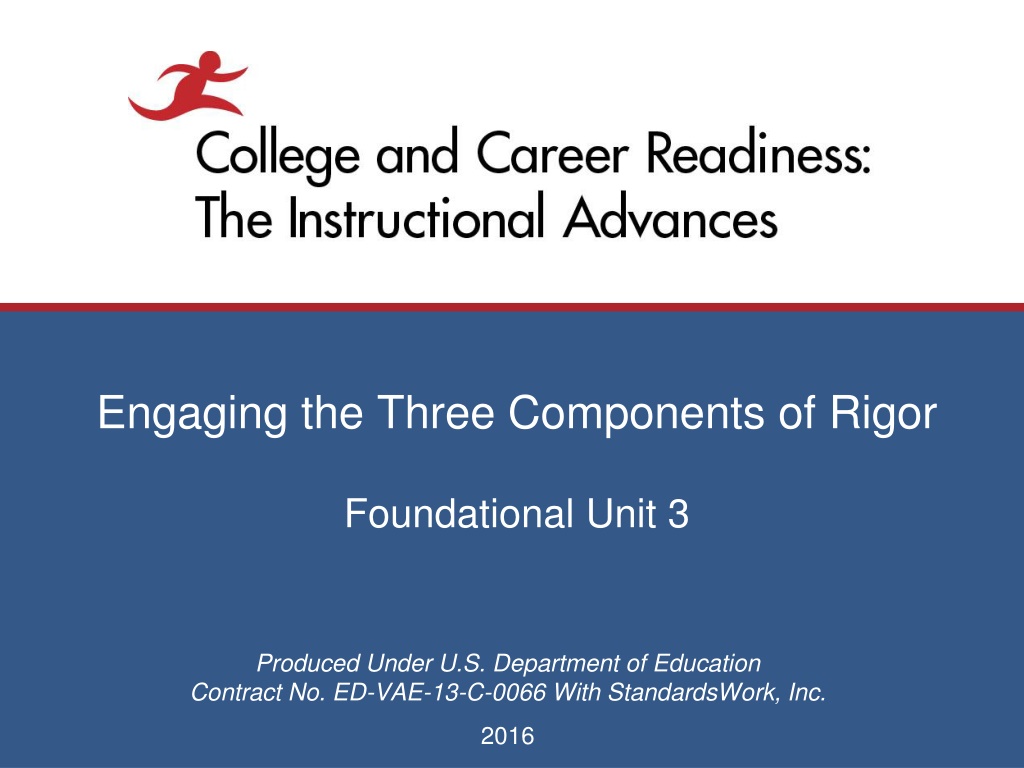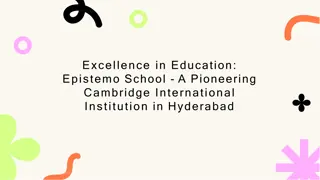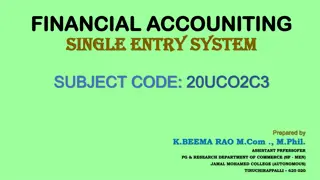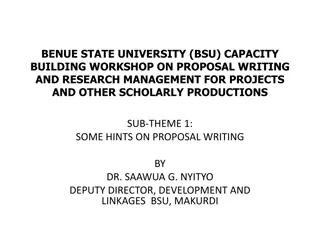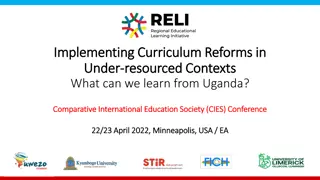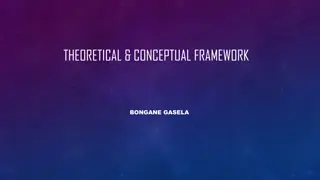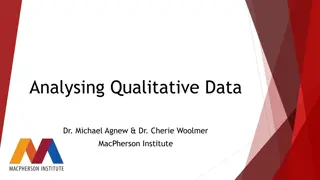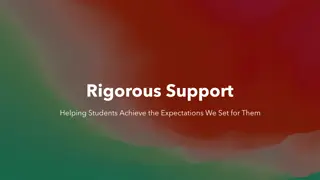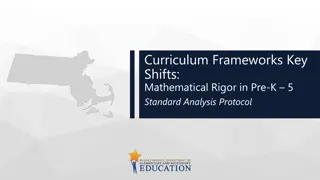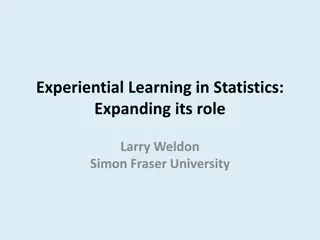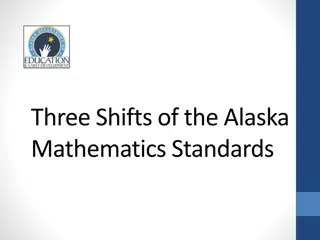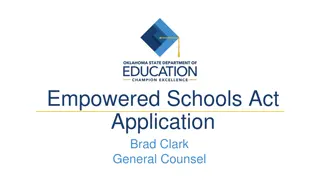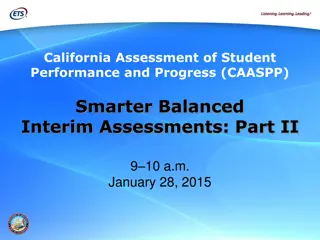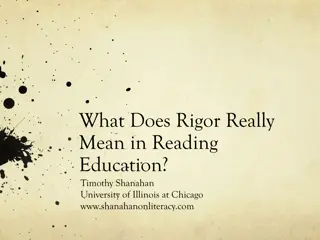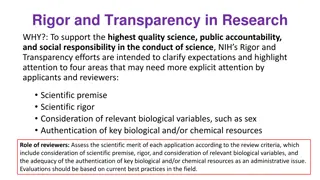Understanding and Implementing Rigor in Education
This resource explores the importance of rigor in education, focusing on coherence, conceptual understanding, fluency, and application. It discusses the three components of rigor and provides practical guidance on how to leverage them effectively in teaching. The content emphasizes the significance of engaging students in deeper mathematical thinking and problem-solving to enhance their overall learning experience.
Download Presentation

Please find below an Image/Link to download the presentation.
The content on the website is provided AS IS for your information and personal use only. It may not be sold, licensed, or shared on other websites without obtaining consent from the author. Download presentation by click this link. If you encounter any issues during the download, it is possible that the publisher has removed the file from their server.
E N D
Presentation Transcript
Engaging the Three Components of Rigor Foundational Unit 3 Produced Under U.S. Department of Education Contract No. ED-VAE-13-C-0066 With StandardsWork, Inc. 2016
Three Key Advances Prompted by the CCR Standards Focus: Focus strongly where the CCR Standards focus. 1. Coherence: Design learning around coherent progressions from level to level. 2. Rigor: Pursue conceptual understanding, procedural skill and fluency, and application all with equal intensity. 3. 2
Unit 3 Objectives Engaging the Three Components of Rigor Learn how the three components of rigor are meant to work together within a level. Understand the importance of each of the three components in teaching students to go beyond merely producing correct answers to being able to apply mathematical concepts from different perspectives. Clear up misconceptions regarding the meaning of rigor. 3
Rationale for Rigor Relevance and Importance Based on the Research Surveys of employers and professors of first-year credit-bearing mathematics courses validate the importance of rigor in instruction. Students with solid conceptual understanding can generalize and apply concepts from several perspectives. Students who can perform calculations with speed and accuracy (fluency) are able to access more complex concepts and procedures. When students have the ability to use math flexibly, they are able to apply their knowledge to solve problems. 4
Implications of Rigor on Instruction Rigor in lessons relates to the depth at which the major work of each level should be addressed: Conceptual Understanding: Comprehending key concepts behind the procedures Fluency: Gaining speed and accuracy in applying procedures Application: Supporting problem-solving and deeper mathematical thinking 5
Hands-On Practice Now let s do some work with engaging the three components of rigor . . . 6
Materials Directions for Participants Worksheet: Engaging the Three Components of Rigor Resource: CCR Standards for Adult Education 7
Directions 1. Check the component(s) of rigor likely to be required in a lesson, activity, or task that targets each CCR Standard on the Engaging the Three Components of Rigor worksheet. Make notes about your rationales. 2. Discuss your reasoning at your table, using the four questions listed on the following slide. 8
Discussion Questions 1. What makes you think a particular component of rigor applies? 2. Are there certain words or phrases in the standard that provide clues? 3. Which components of rigor might appear together in a single standard? Explain. 4. Which components of rigor are not likely to appear together in a single standard? Explain. Work Session 30 minutes 9
Reflections How do you define real-world in application problems? Is it enough to give very difficult problems to students to advance rigor in a lesson? How can we separate difficulty of technique from rigorous thinking? Did your understanding of the meaning of rigor change as a result of this activity? 15 minutes 10
Next Steps How has participating in this activity changed your thinking about the CCR Standards? How will you use the information and understanding you have acquired to improve your teaching practice and student learning? What additional training and tools would strengthen your ability to do so? 11
